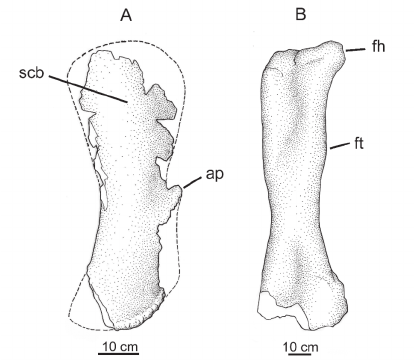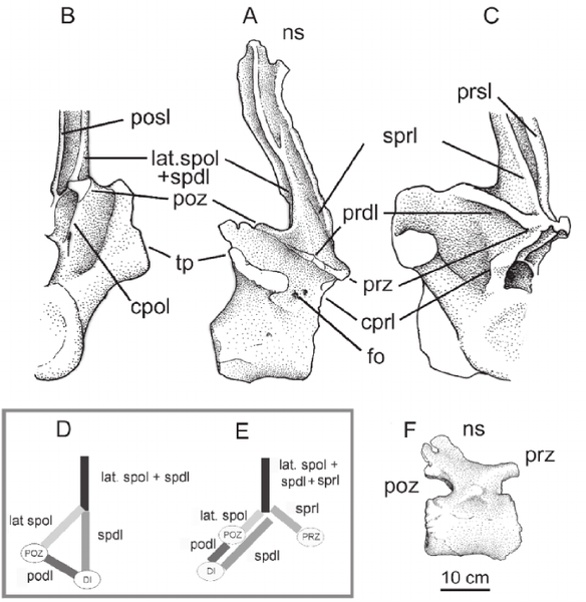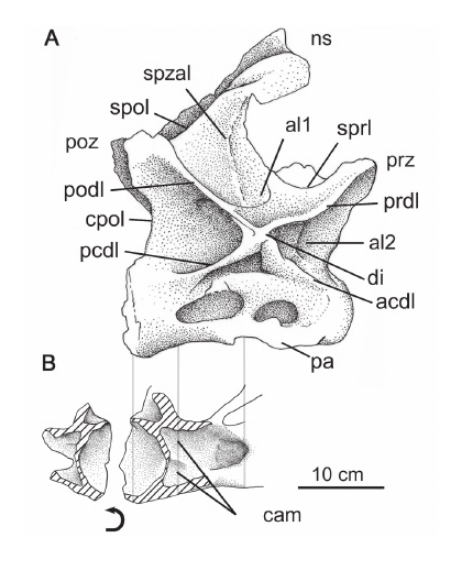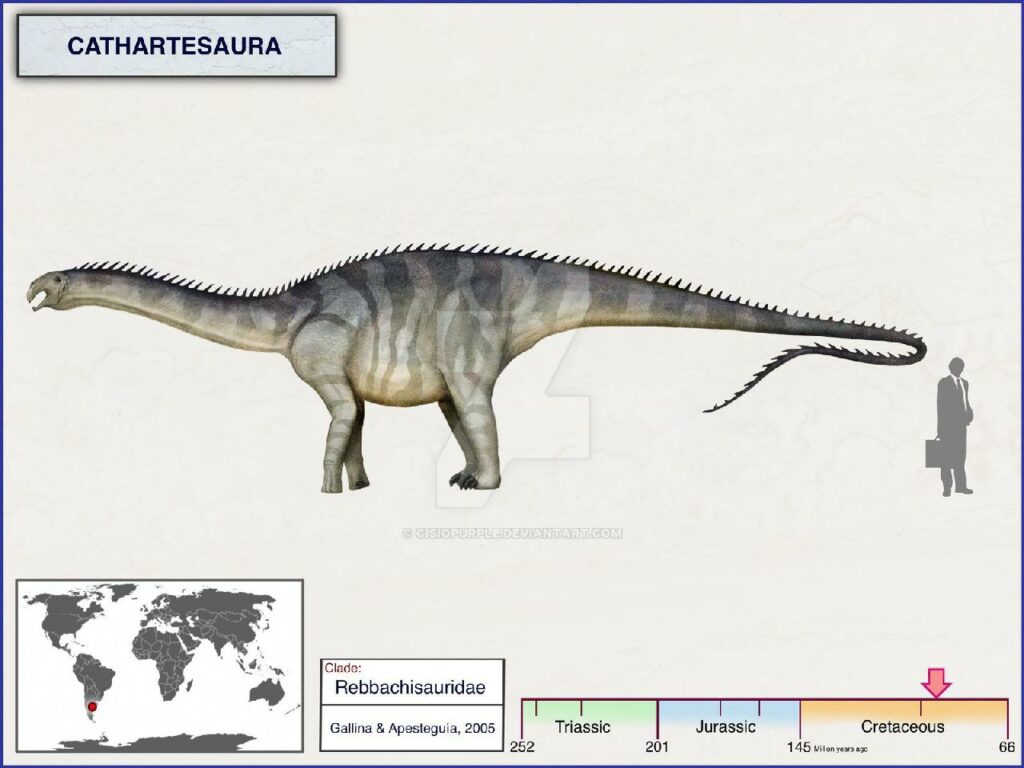In the mesmerizing world of dinosaurs, the Late Cretaceous Period stands out as a time of remarkable diversity and complexity. Amidst this tableau, Cathartesaura, a gigantic herbivore, roamed the ancient landscapes of what is now Patagonia, Argentina. Its discovery has not only shed light on the sauropod family but also on the ecosystem of its time. Let’s embark on a journey to uncover the secrets of this magnificent creature, whose existence tells a story of a world long gone.
Discovered in La Buitrera, Río Negro Province, Patagonia, Argentina, in 2005, Cathartesaura is a fascinating subject for those intrigued by the world of dinosaurs. Its discovery in this rich paleontological site adds another layer to our understanding of the Late Cretaceous Era.
Cathartesaura Key Facts
| Keyword | Fact |
|---|---|
| Pronunciation | kaf-art-e-sore-rah |
| Meaning of name | Cathartes Lizard |
| Group | Sauropoda |
| Type Species | Cathartesaura anaerobica |
| Diet | Herbivore |
| When it Lived | 100.5 to 89.8 MYA |
| Period | Late Cretaceous |
| Epoch | Cenomanian to Turonian |
| Length | 31.7 to 48.6 feet |
| Height | Approximately 7.0 tons |
| Weight | 4.5 to 9.0 feet at hips |
| Mobility | Moved on four legs |
| First Discovery | Unknown |
| Described by | 2005 by Pablo Ariel Gallina and Sebastián Apesteguía |
| Holotype | MPCA-232 |
| Location of first find | La Buitrera, Argentina |
Cathartesaura Origins, Taxonomy and Timeline
Named after ‘Cathartes’, the New World vulture genus, Cathartesaura aptly captures the essence of this dinosaur with its immense size and herbivorous nature. The name refers to te extent species of vulture that lives around the quarry where the dinosaur was found (Carthartes), and to “saura”, for reptile in Greek. The genus name is a blend of the ancient and the modern, symbolizing the connection between ancient life and present-day wildlife. The species name, C. anaerobica, refers to Anaerobicos S. A., an argentinian company that provided technical and material support to the excavation team.
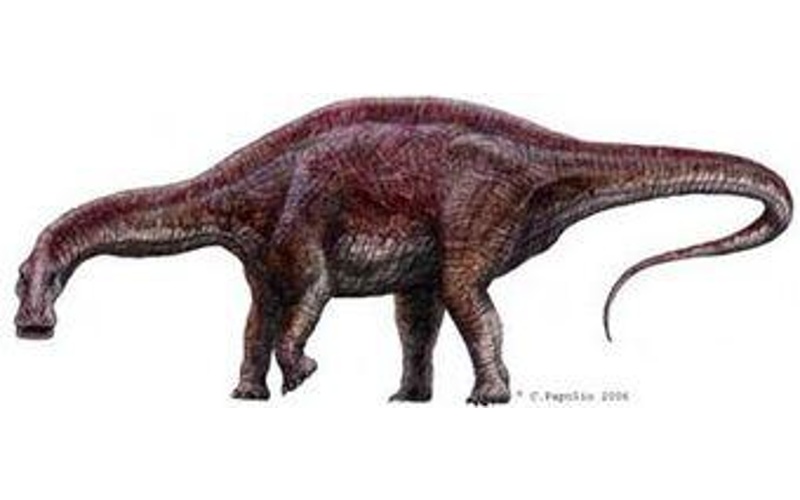
As a member of the Sauropoda and specifically the Rebbachisauridae, Cathartesaura holds a unique position in the dinosaur family tree. This classification sheds light on the diversity of sauropods, especially those that thrived during the Late Cretaceous Period.
Cathartesaura lived during a time of significant geological and biological changes, specifically between 100.5 to 89.8 million years ago. This period, spanning the Cenomanian to Turonian, was marked by a diverse array of dinosaur species, each adapting to their environment in their own way.
Discovery & Fossil Evidence
The discovery of Cathartesaura in 2005 was a significant milestone in the field of paleontology. It offered a new perspective on the sauropods that inhabited South America during the Late Cretaceous Period.
Unearthed in the fossil-rich region of La Buitrera, the holotype MPCA- 232 has provided invaluable insights into this species. While much of its skeleton remains a mystery, what has been discovered paints a picture of a gigantic creature, well-adapted to its herbivorous lifestyle.
The fossils of Cathartesaura, mainly composed of vertebrae and limb bones, reveal a creature of immense size and strength. The degree of preservation of these fossils has been instrumental in reconstructing the life and habits of this magnificent dinosaur.
- Cathartesaura scapula and femur
- Cathartesaura caudals
- Cathartesaura posterior cervical
Cathartesaura Size and Description
Delving into the physical attributes of Cathartesaura, we uncover a dinosaur that was not only gigantic but also magnificently adapted to its environment.
With a body built for grazing, Cathartesaura was likely an impressive sight in its natural habitat. Its long neck and massive size would have enabled it to reach vegetation that other herbivores could not, making it a vital part of its ecosystem.
Although the exact measurements of Cathartesaura remain subject to ongoing research, the available fossil evidence suggests a dinosaur of considerable size. Estimates based on related species and skeletal fragments paint the picture of a Sauropod of significant stature, a true giant of its time.
The Dinosaur in Detail
Exploring the characteristics of Cathartesaura, we find a dinosaur that exemplifies the adaptability and survival instincts of sauropods.
The skeletal structure of Cathartesaura, particularly its vertebrae and limbs, suggests a dinosaur well-suited to a life of constant grazing. This anatomy not only facilitated its feeding strategies but also indicated a level of resilience that allowed it to thrive in the diverse environments of the Late Cretaceous.
Notable specimens of Cathartesaura have contributed significantly to our understanding of this species. Each discovery, while limited, adds depth to our knowledge of the diversity and complexity of sauropod life during this pivotal period in Earth’s history.
Contemporary Dinosaurs
In the Late Cretaceous Period, a time of profound ecological richness, Cathartesaura, the colossal herbivore, coexisted with a variety of other fascinating dinosaurs. Each species in this diverse tapestry of Cretaceous life played a unique role, contributing to the dynamic balance of their shared environment.
Among these contemporaries was Megaraptor, a predator significantly larger than Cathartesaura. This imposing carnivore roamed the same territories, possibly preying on smaller dinosaurs but unlikely to challenge the giant Cathartesaura. Their interactions, if any, would have been fleeting, with Cathartesaura’s immense size providing a deterrent against any potential threats from Megaraptor.
Neuquenraptor, another contemporary, was a smaller but agile predator. Its presence in the same region as Cathartesaura suggests a complex ecosystem where multiple predatory species coexisted. The nimble Neuquenraptor, while not a direct competitor for food, would have added to the dynamic interplay of predator and prey within their shared habitat.
Patagonykus, a smaller contemporary, likely scavenged the remains left by larger predators, including those of Megaraptor and Neuquenraptor. The coexistence of Cathartesaura and Patagonykus was marked by indirect interactions, as the giant herbivore’s feeding habits would have influenced the availability of scavenging opportunities for Patagonykus.
Unenlagia, roughly the same size as Neuquenraptor, shared the landscape with Cathartesaura. This dinosaur’s versatility in hunting and scavenging might have led to occasional encounters with Cathartesaura, though their significantly different diets meant that any interactions were more cohabitational than competitive.
In this Cretaceous world, the relationships among these species were not merely about survival but about the intricate dance of life and death, of coexistence and competition. The majestic Cathartesaura, along with its diverse contemporaries, played a pivotal role in maintaining the ecological equilibrium of their era.
Interesting Points about Cathartesaura
- Late Cretaceous Giant: Cathartesaura lived during the Late/Upper Cenomanian to Turonian Epochs, a crucial time in the Late Cretaceous Period.
- Discovery in Patagonia: Its fossils were first discovered in La Buitrera, a site known for its rich fossil finds.
- Unique Sauropod: As a member of the Rebbachisauridae, Cathartesaura stands out among sauropods for its immense size and diet.
- Insights into Herbivorous Behavior: Its physical traits offer insights into the lifestyle and feeding habits of Late Cretaceous sauropods.
- Limited Fossil Records: The scarcity of fossils makes each discovery of Cathartesaura an important contribution to paleontology.
Cathartesaura in its Natural Habitat
Venturing into the world of Cathartesaura, we gain insights into the type of environment that shaped its existence during the Late Cretaceous Period.
During this time, the Earth was a vibrant ecosystem, supporting a wide range of plant and animal life. The climate and geography of the period, conducive to diverse vegetation, provided an ideal setting for giants like Cathartesaura.
As a herbivore, Cathartesaura played a vital role in its ecosystem. Its diet likely consisted of a variety of plants, and its feeding habits would have influenced the vegetation patterns of its habitat.
The physical attributes of Cathartesaura, including its massive size and dietary habits, suggest a creature adept at navigating and adapting to its environment. Its presence not only impacted its immediate surroundings but also contributed to the overall health and balance of its ecosystem.
Frequently Asked Questions
Cathartesaura lived during the Late Cretaceous Period, specifically in the Cenomanian to Turonian.
It was discovered in La Buitrera, Argentina.
Cathartesaura was a herbivorous sauropod.
Its name, meaning “Cathartes Lizard,” reflects its connection to the New World vulture genus and its reptilian nature.
It was characterized by its immense size and specific adaptations for a herbivorous lifestyle.
They offer insights into the diversity and lifestyle of Late Cretaceous sauropods.
Sources
The information in this article is based on various sources, drawing on scientific research, fossil evidence, and expert analysis. The aim is to provide a comprehensive and accurate overview of Cathartesaura. However, please be aware that our understanding of dinosaurs and their world is constantly evolving as new discoveries are made.
- https://www.researchgate.net/publication/262637167_Cathartesaura_anaerobica_gen_et_sp_nov_a_new_rebbachisaurid_Dinosauria_Sauropoda_from_the_Huincul_Formation_Upper_Cretaceous_Rio_Negro_Argentina
- https://www.researchgate.net/publication/229974620_A_phylogenetic_analysis_of_Diplodocoidea_Saurischia_Sauropoda
- https://www.scielo.br/j/aabc/a/CTYyxSTHdXCwXV7F5FKykTy/?format=pdf&lang=en
This article was last fact checked: Joey Arboleda, 03-11-2024
Featured Image Credit: dinosaurpictures.org

